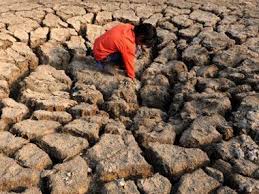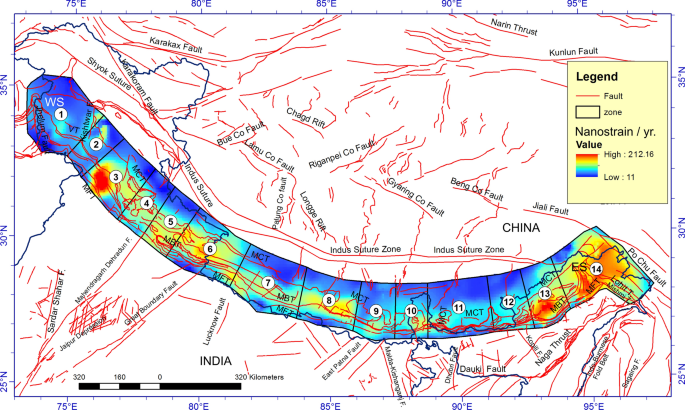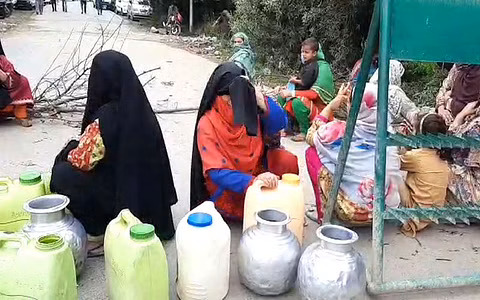In 2002, the Jammu and Kashmir government set up a water-treatment plant at Pokhribal in Srinagar to supply drinking water from the Dal Lake to the households of the area. But local people objected saying the lake water was unfit for consumption, so the government changed the water source to a nearby freshwater stream. But, in the last decade, despite getting even more polluted, the Dal Lake has again become a source of drinking water for a significant portion of the city.
The state’s Public Health Engineering (PHE) department, which supplies water to households, says the state faces problems of both water quality and availability. With lower precipitation this year, some 39 water-supply schemes in the Valley have been hit. In north Kashmir’s Baramulla district alone, 16 water-supply schemes face severe shortages at the source. Similar problems have been reported from Srinagar, Budgam, Anantnag, Bandipora, Kulgam, Shopian, Kupwara and Ganderbal.
Rising temperatures are threatening Kashmir’s glaciers, the main source of water in the Valley. These glaciers are shrinking as much as 15-18 metres a year and, in the past 70 years, Kashmir has lost three major glaciers. Data analysis of the impact of changing weather patterns in the Himalayan region by Shakil Ahmad Romshoo, head of the department of earth sciences, Kashmir University, and researcher Khalid Omar Murtaza, showed that the glaciers in Lidder Valley in south Kashmir have shrunk by 17 percent. The total glaciated area of nine benchmark glaciers had fallen from 29 square kilometres in 1980 to 23.81 square kilometres in 2013.
The study revealed that smaller glaciers were more vulnerable to recession than major ones. “If this trend of recession continues into the next few decades, it may pose a serious threat to the availability of water for irrigation, hydropower, horticulture and recreational use,” the study concluded.
“We lack systems to store water,” rues Romshoo. “It is really a sorry state that 95 percent of irrigated land in Pakistan uses water from Jammu and Kashmir and yet we struggle for every drop of water during peak demand. Despite having enough per-capita availability, we have failed to manage our water resources, that include 8,000 glaciers and rainfall.”
Driest winter in recent times
The winter of 2017-18 was one of the driest in recent memory. In January, a normally snowy month in the Valley, Kashmir saw a nearly 90 percent drop in precipitation. The Valley received 3.2 millimetres of rain and snowfall against the average of 65.3 millimetres for the month. It was followed by several dry months, which reduced water levels in the Jhelum River to two feet in the Valley. “At Srinagar’s Ram Munshibagh earlier, before rains started, it (water level) was 1.94 feet and 1.94 feet at Asham. Ideally, it should have been around eight feet in Srinagar then,” says Tariq Ahmad, an official from irrigation and flood control department.
The PHE department stipulates a per capita supply of 135 litres in the cities, 70 litres in towns and 40 litres in villages. Rural Kashmir suffers most during summers as the department currently supplies 75 million gallons a day (MGD) against a requirement of 85 MGD.
Since May, scores of the villages in north Kashmir as well as parts of the city have faced a water scarcity that led to protests.
Nazir Ahmad, a resident of the Narbal Ghat in central Kashmir’s Budgam district, says that the area had witnessed severe water crisis for the first time in a decade. “We couldn’t get water supply even on the eve of Eid-ul-Fitr. Nearly half a dozen villages in our area protested recently and blocked roads to press our demands,” he says.
The PHE department has declared scores of areas ‘drought-affected’ and has started rationing water supply to the entire Valley. “Many areas have been declared drought affected ahead of the beginning of peak season. In many areas we have a schedule to provide water for 10 hours daily,” says a PHE official, Basheer Ahmad.
Distribution system needs to be revamped
For the first time, the PHE department has prepared a drought-action plan to deal with the water crisis. The plan, which was formulated in coordination with all 24 PHE divisions of Kashmir, is estimated to cost Rs 700 crore. “Under this plan, we need to upgrade our existing system of distribution and manage water resources,” says Ahmad. “The distribution pipes date back to 1930 and leads to avoidable loss of water. We need an immediate revamp of the entire system.”
According to an official from PHE department, of the 1,900 water-supply schemes commissioned in the last decade, around 1,600 of them have made no progress due to changes in the administration and the resulting lack of funds. Baramulla was allotted 173 schemes, Anantnag 156, Budgam 111, Kupwara 109, Kulgam 101, Shopian 90, Srinagar 98, Bandipora 89, and Ganderbal 73.
Similarly, 294 schemes were sanctioned for Jammu district, 168 for Rajouri, Poonch 89, Kishtwar 99, Kathua and Samba 72 each. While for Leh and Kargil districts of Ladakh region, 149 schemes were allotted.
Officials say the Centre has halved funding under its National Rural Drinking Water Programme, which totalled Rs 500 crore a year till 2014.
The PHE department is also grappling with the loss of water due to the obsolete distribution system and inefficient filtration plants in place. “We need robust funding from the Centre to revamp the entire distribution system,” another official from the accounts section of the PHE department says.
The irrigation and flood control department (I&FC) has issued an advisory against overuse of water resources, asking farmers in five districts of Kashmir to replace paddy with crops that require less water. MM Shahnawaz, the chief engineer of the I&FC department, says, “We can’t ensure water to the tail-end as precipitation has been meagre this year. Discharge of Jhelum decreased drastically and our advisory stands for the people.”
Abdul Wahid, the chief engineer of the PHE department, adds, “The department is managing water supply to households within available resources. In case of a severe drought-like situation, schemes like impounding water at source or redevelopment of wells will be done. We need to explore groundwater sources or create reservoirs to ensure water supply during the summer season.”






